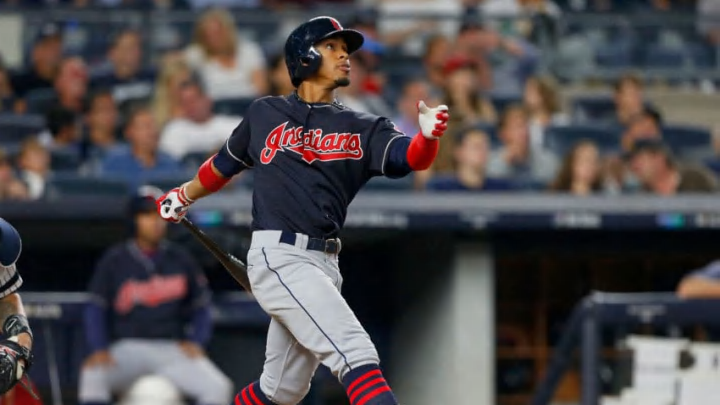
Cleveland Indians: 1948-1955
The Indians teams of the late forties/early fifties were a pretty good offensive team that routinely ranked in the top half of the league in runs scored averaging 760 runs per year over this span. The 1948 World Series team was led by Hall of Famers, Lou Boudreau, and Larry Doby. Boudreau put up a 10 win season that year and won the AL MVP award but his production fell off a cliff after that, and he was never really productive again.
Larry Doby was a consistent contributor throughout the 50’s however, averaging over 5 WAR per year and a 144 OPS+. Another big bat during this time was the third baseman, Al Rosen. From 1950 to 1940 Rosen had a 151 OPS+, meaning he was over 50 percent better than league average at the plate, culminating in a 180 mark in 1953 when he won the MVP award.
Probably my favorite aspect of this era of Indians baseball was that Jim Hegan, an inferior hitter, was the starting catcher for the Cleveland Indians every season from 1947 to 1956. During that time, Hegan only posted a 78 OPS+ and yet played in five all-star games! Maybe he was really good at framing.
Cleveland Indians: 1995-2001

The Indians teams of the mid to late 90’s were known for their offensive might. Jim Thome, Roberto Alomar, Omar Vizquel, Albert Belle, David Justice, Kenny Lofton, Manny Ramirez, and Eddie Murray are all Hall of Famers or close to it, and they all were part of this run of success that culminated in two World Series appearances. The Indians averaged 909 runs per season during this stretch. They topped out in 1999 at 1009 which is the highest mark since the 1950 Boston Red Sox.
During this time, catcher and shortstop were the only spots that didn’t have a consistently above average hitter. This is because they had one of the greatest glovemen of all time at shortstop in Omar Vizquel. This era of Indians baseball is one of the greatest offenses of all time and one in which all other great offenses are measured against. However, not even this team was able to capture the elusive World Series trophy.
